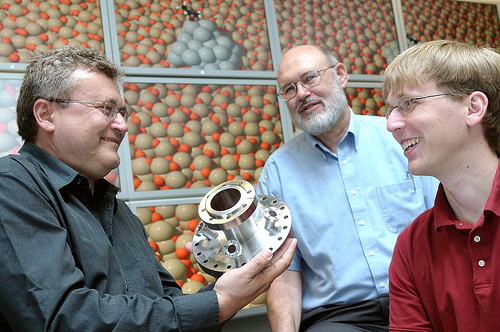Scientists at the US Department of Energy's Argonne National Laboratory have identified a new family of silver-based catalysts for the production of the industrially important chemical propylene oxide that are both environmentally friendly and cheaper.

The chemical propylene oxide (Wikipedia entry) is commonly used in the production of plastics and propylene glycols for paints, household cleaners and brake fluids in cars.
Large silver particles are used to make propylene oxide from propylene, but the process suffers from low levels of selectivity and utilization, while receiving a large amount of carbon dioxide as a by-product. The researchers discovered that silver nanoclusters, containing three or more atoms, which are up to 3.5 nanometers in size, are very active and selective catalysts for the production of propylene oxide.
In the next step, the researchers built a model of the mechanism behind the so effective activity of these nano-aggregates. They discovered that the particular electronic structure of the silver catalysts is the driving factor for the selectivity of these nanoaggregates.
"Propylene oxide is a building block in the preparation of several other industrial chemicals, but the existing methods for its production are not that efficient," explains the lead researcher.
"The research findings open a new chapter in the field of silver as a catalyst for the epoxidation of propane," the researchers note. The research findings were published in the scientific journal Science.
